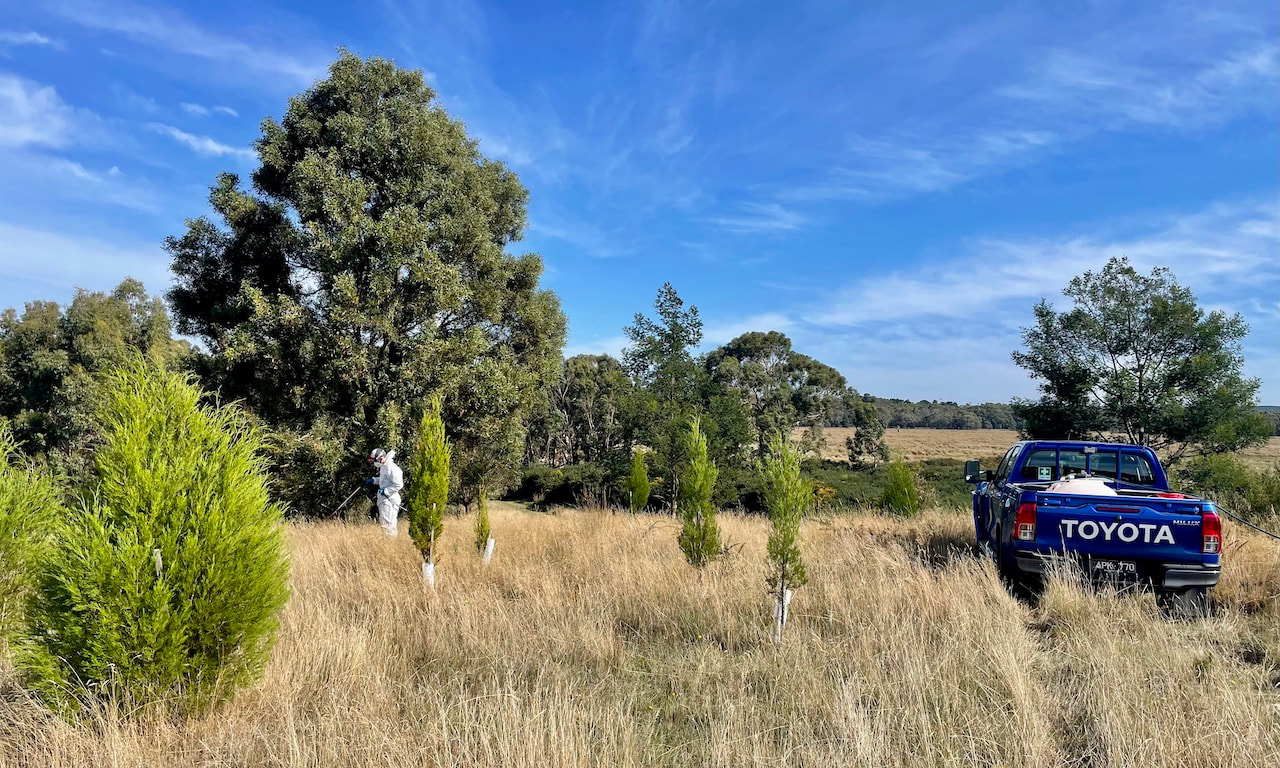
Team of four this time using two long hoses that Gary has fixed to the BRT 200 litre spraying unit. We also spot sprayed the potential banksia seed orchard area and followed up gorse regrowth on the NW corner of ImLal South.
 Autumn spraying of gorse by BRT on and around the mullock heap. We're trying to keep it at bay where we've planted. In keeping with the Bradley method of weeding – moving from the best areas to the worst. Far too much gorse on the steep west slope – almost over head height. Team of four this time using two long hoses that Gary has fixed to the BRT 200 litre spraying unit. We also spot sprayed the potential banksia seed orchard area and followed up gorse regrowth on the NW corner of ImLal South.
0 Comments
Annual spraying of gorse on the mullock heap top. Hakea decurrens still going strong (middle). Last of the black wattle going in (bottom). Not much gorse left to spray in ImLal South. Gorse on ImLal South is under control. It's harder on the steep slopes of the mullock heap where we're trying a combo of digging, chainsaw cutting and spot spraying.
Only seven of the original plot of 52 sequoias has survived the onslaught of the bouncing roos on the ImLal North site. They don't seem to like the swampy conditions much either. The sequoia pictured is as old as the young Nate on the left – 10yo and way behind Nate in the growth stakes.
Phil on the right shows his patented ring of steel guard for keeping the roos at bay – for now. There’s still 28 of the locally endangered Hakea decurrens flourishing on the top of the mullock heap at ImLal. Everything else is taking a beating from the roos, wind and poor mullock heap soil (or lack of). They seem to have been flowering for ages.
The rain came pouring down as I topped the mullock heap. Drenched, I must admit to descending gloomily to Footrot Flats, a soggy site south of the dam, where I thought our planting had totally failed. Not so – after record spring and summer rains and the warmth that comes with climate change, the hybrid eucs and Turkey oaks were rising from the dead. Many were becoming entangled in their plastic sleeves, so I removed the worst cases. Will now have to check whether or not they're more vulnerable to bouncing roos and ravaging wallabies.
|
AuthorGib Wettenhall is interested in how we carry out large scale landscape restoration that involves the people who live in those landscapes. That, he believes, would build truly resilient landscapes. Categories
All
|